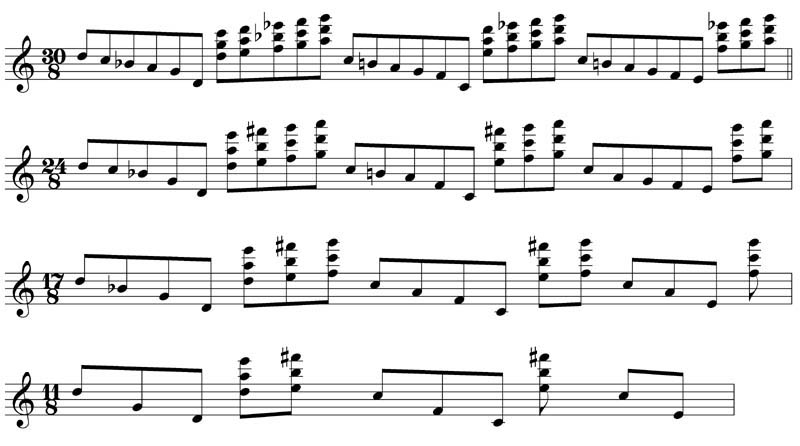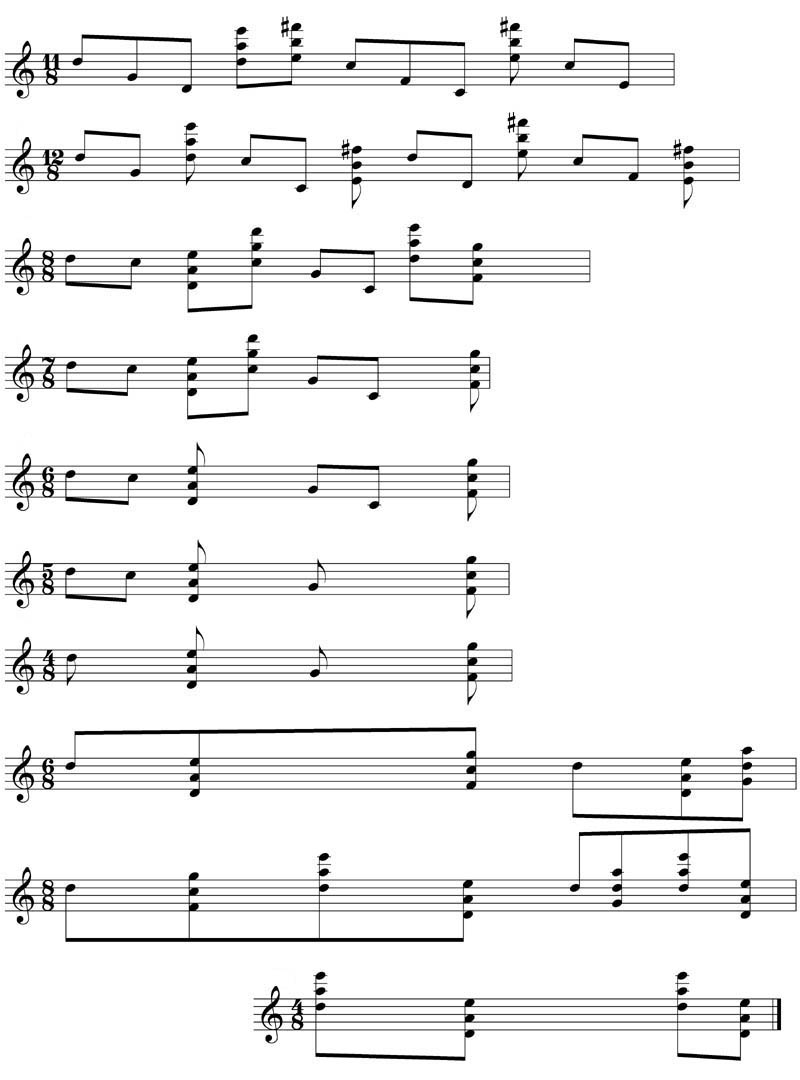1. Developing the Basic Materials. We will begin with two simple ideas, descending and ascending patterns. Our material must be constructed so the listener can clearly distinguish the constituent parts while maintaining continuity between them. A and C are identical except for the first note of each group. B and D are as well identical with the exception of the splitting of D into parallel fourths. By repeating this modular unit we are providing the listener a durational parameter in order to allow modifications to be comprehended. If we moved directly from this bar to the next, the listener would have no guide as to what is primary material and what is development.
2. Preparing the Modifications. We need to take care with how we first modify the material, and the manner in which it is applied, in that this transformation will be the initial clue for the listener to understand the succeeding process. The continuity that has been established within the construction of the basic materials themselves should be reflected in a consistent manner of development through each modular unit. Here we have decided to leave A and C unchanged while B and D have added segments. Of course any additions or subtractions and their placement are at the discretion of the composer. The choice to put these additions within a musical construct rather than at the beginning or end was determined by their triadic nature - simply put, the idea is to 'fill in' the leaps.Note that the process from modular units 1-7 consists of B and D expanding and then contracting again. By 7 there is no durational difference between any of the musical segments.
3. Different Modifications. The second section begins by extending the A and C motives first this time, before allowing B and D to join. To key the listener in to the fact that a new section has arrived, a new voice is introduced, again a parallel fourth higher in D.
4. Expansion and Contraction. The greatest point of extension occurs in modular unit 12, exactly halfway through our process. The addition of selected chromaticism during this middle section introduces another dimension for the listener to use in the cognitive process as the modular units become increasingly longer. As well, we will restrict the number of repetitions during these passages to avoid tiring the listener's ear. It is important to note that it was a decision based on compositional dramatic interest to limit the expansion here; some process pieces involve expansion ad infinitum.
5. The next section transforms our initial material through subtracting segments in a different manner than when they were first added. To provide the listener with another clue that a significant new pattern is beginning, the parallel fourth voices have been amplified to parallel fifths.

6. The final modular units become more concentrated than even the initial musical ideas, as the chart below illustrates.

6. Subsidiary Parts. After writing the initial process, the composer noted that a compelling texture was lacking and a second part (or player) was composed. Since some of the measures here are of a different duration than in the first part, a full score is not possible. Compare the first modular unit below with our original: here we have applied the same pattern but with two different pitch interpretations. Therefore, the second part (in 20/8) must be repeated half as many times as the first part (in 10/8). As well, in keeping with the parallel fourth idea, we have created a second line a fourth lower than the original. In addition, instead of adding a parallel voice above in D (as in the original) in the second part C has an additional lower fourth.
Continue for the complete composition.






